
✈️ Istanbul 🇹🇷 & 🛳 🇬🇷 Aegean Sea 🏛 🏺 – Part 11 – Crete, Greece
Tuesday found us in Crete on an 8-hour excursion visiting the renowned archaeological site of the Minoan age – the Palace of Knossos with a tablet for 3D/AR. We also had headsets to hear our guide, Katerina’s, commentary.
The well equipped tourist 😍

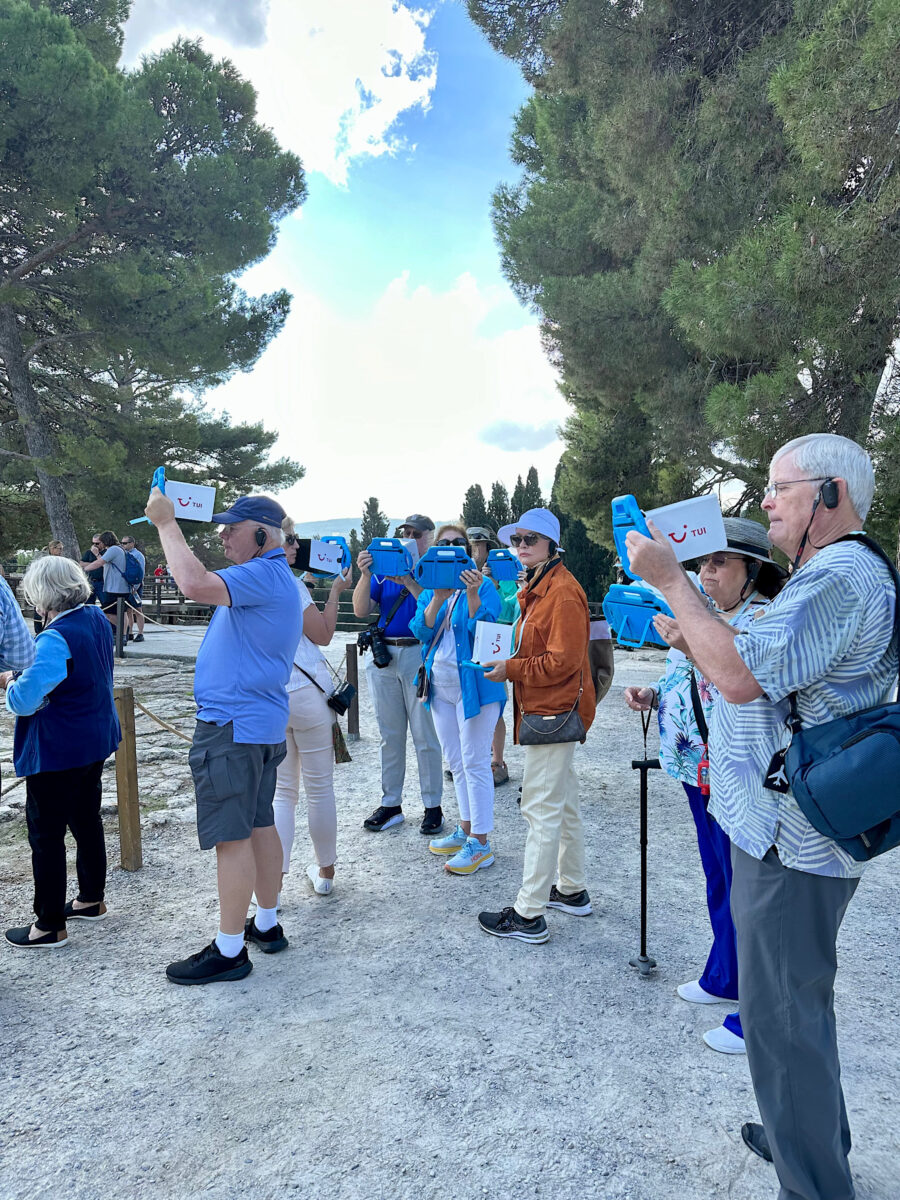

The tablet really added a whole other dimension to the visit. AR essentially enabled us to simply point the tablet’s camera at various locations of the site and view them in their original form, as they once stood thousands of years ago. It is an amazing way to view the site as both the ruins of today and the complete, whole buildings of yesteryear. Katerina would then explain what we were seeing, and tell us which section of our tablets to view and pinch in. She also showed us pictures from her reference book.

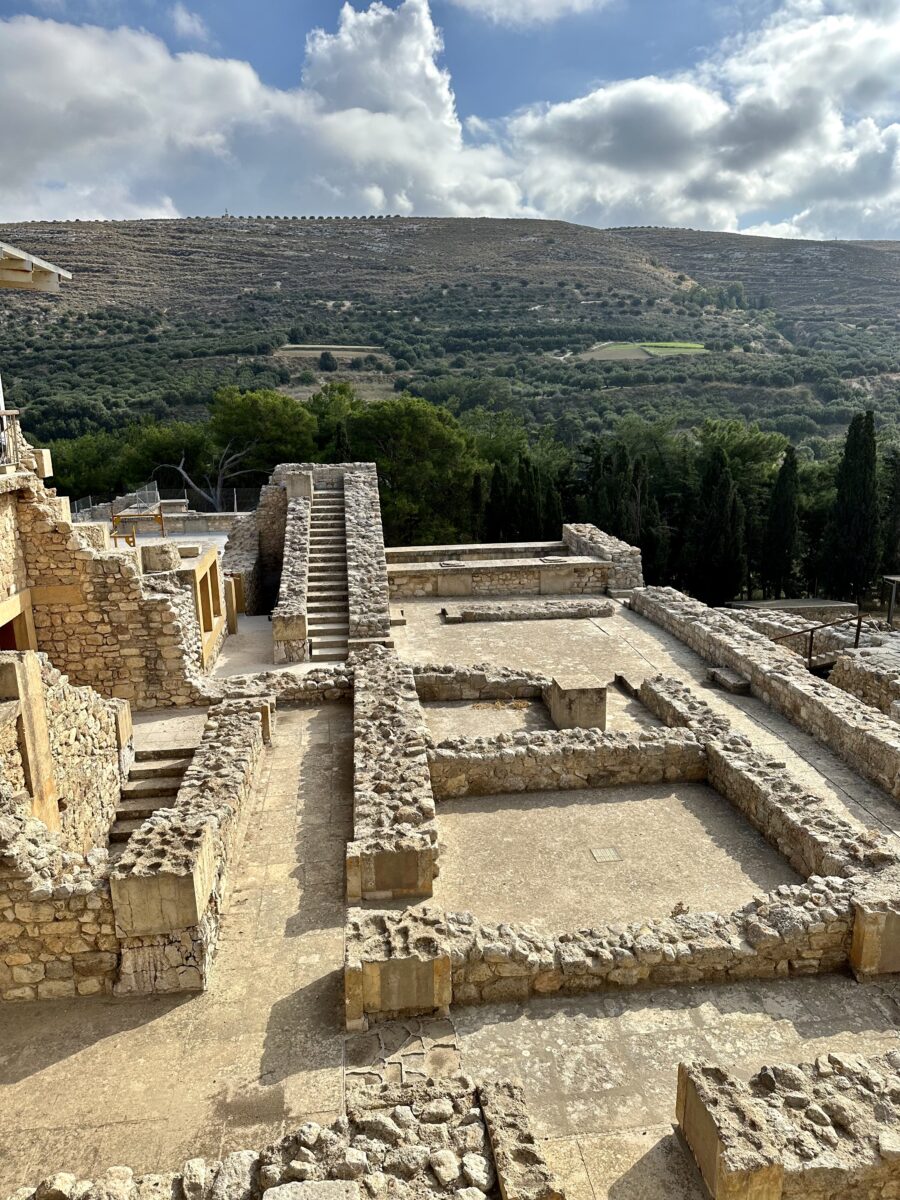
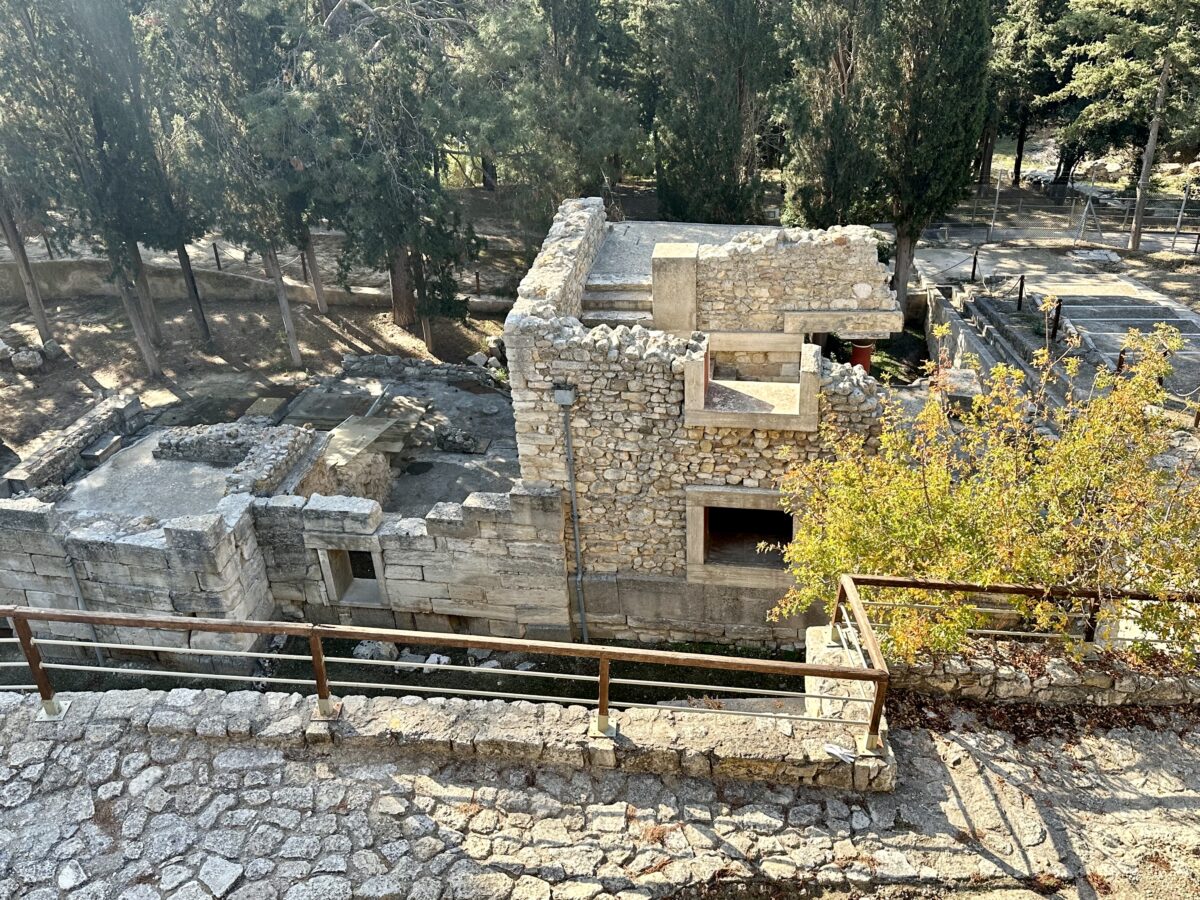
Knossos was once the religious and administrative center of the Minoan era. The first palace of Knossos commenced @ 2,000 BC, but was destroyed and rebuilt 300 years later… in 1,700 BC. The site focused on the community and housed massive warehouses and storage facilities and even had sophisticated, for its day, like what we saw in Santorini sewage and water systems.
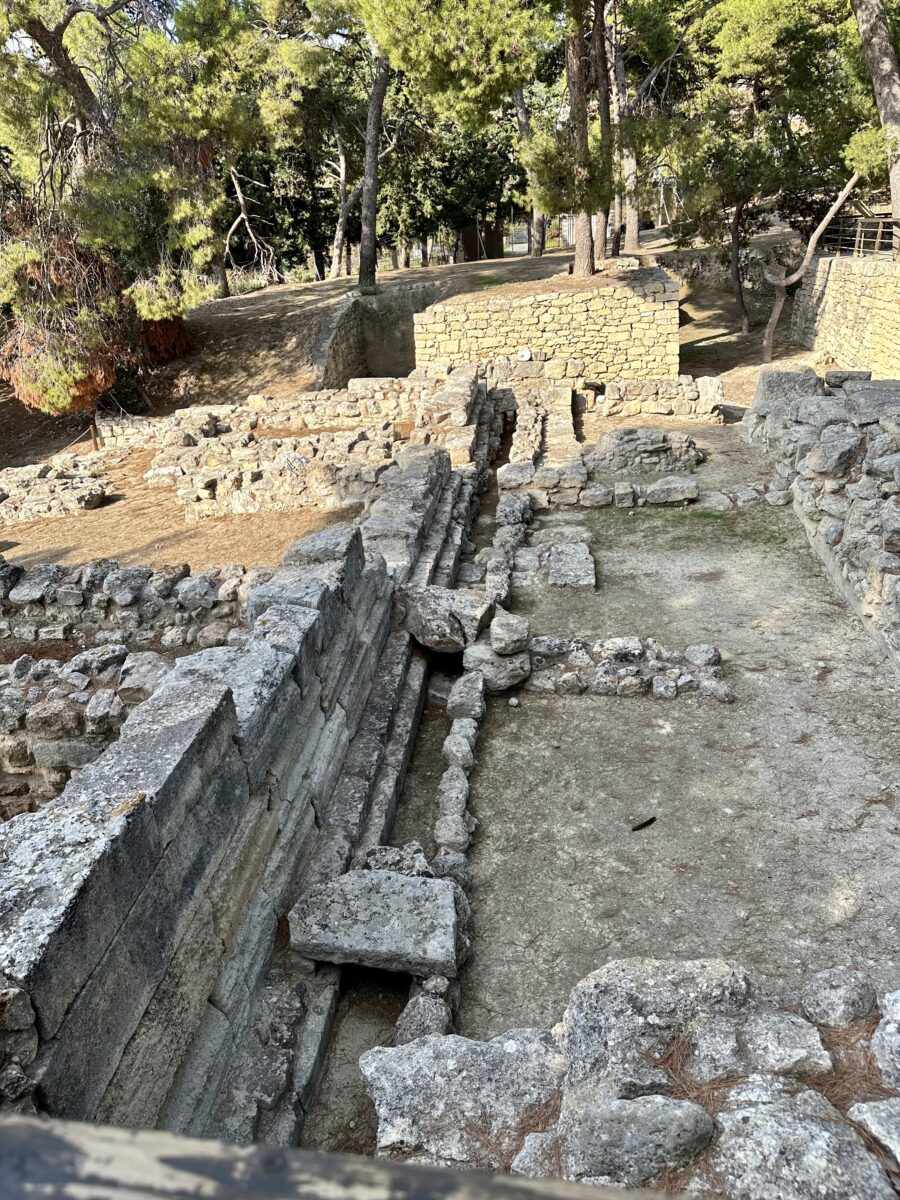


Impressively advanced terra-cotta pipes carried drinking water into Knossos from miles away, and canals carried sewage away from the palace.
A drainage canal that was covered with stones (photo above left and top right).
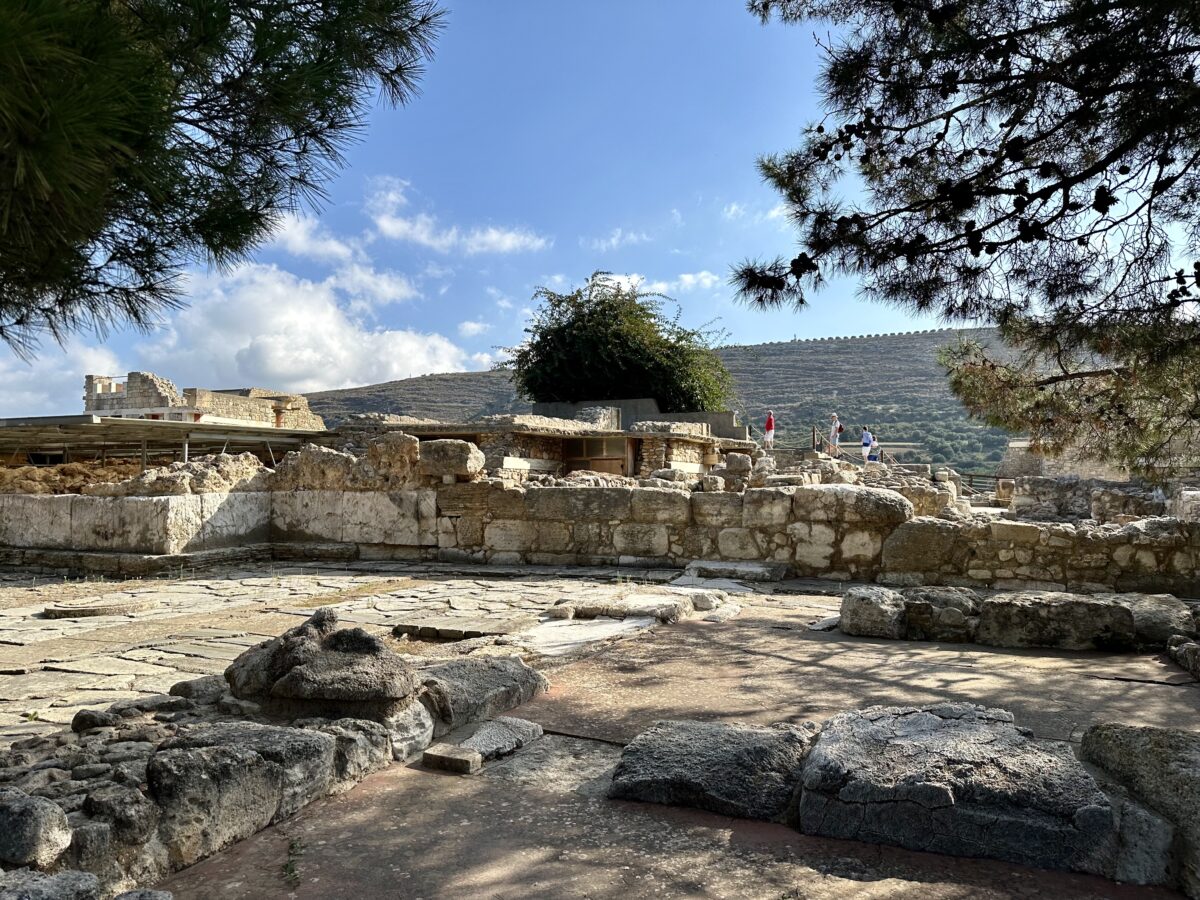


Without using ones imagination the massive site could be underwhelming. But one must remember that this site is over 4,000 years old and rebuilt a number of times. Layering new structures on top of older burned or destroyed structures over the centuries. These above photos show the various levels at the beginning of the site.




There were hundreds of enormous storage jars. The lines around the jars were not only decoration, but served as quantity markers. (photo above top left and right)
A lower level for storage (photo above bottom left) and what our guide termed safety deposit boxes (squares that held treasures of the palace). If you look carefully in the middle upper portion of the photo (above bottom right) under the stones are more massive storage jars.
Excavations continue but it’s slow going. A ginormous 🏺 in 1 of many storage rooms in this area of the site.

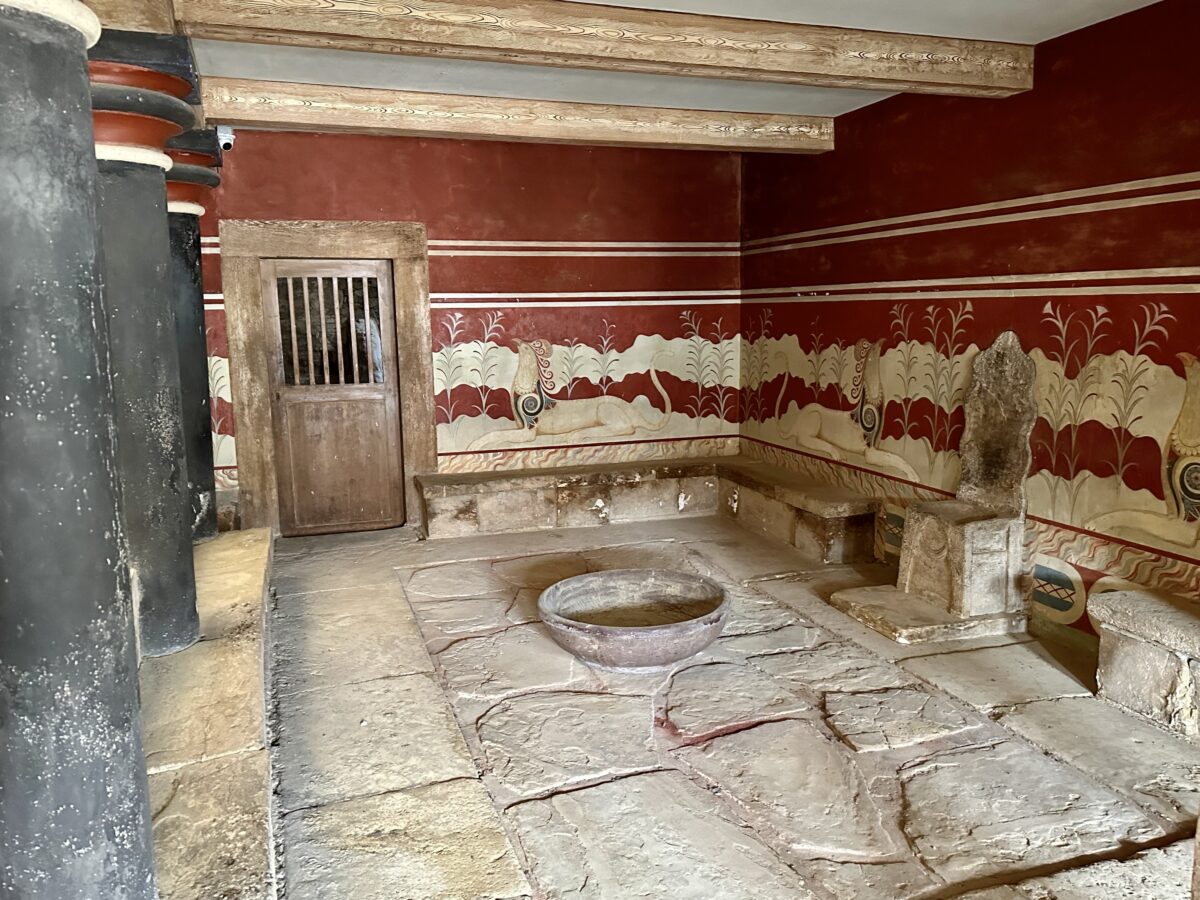
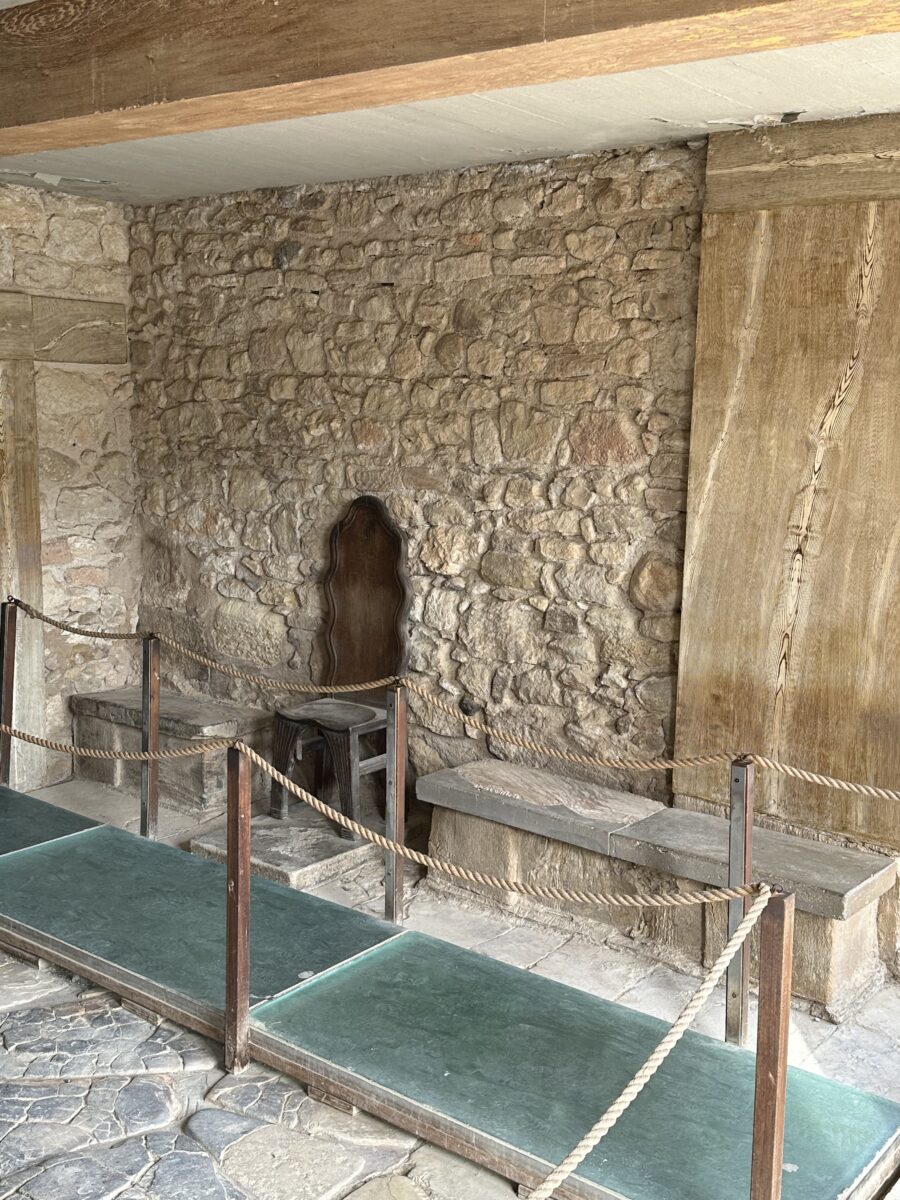
This is the Minoan King judgement chamber. (photos above) There is debate over why such a small room would be the Kings throne room so perhaps it was used for less important meetings.



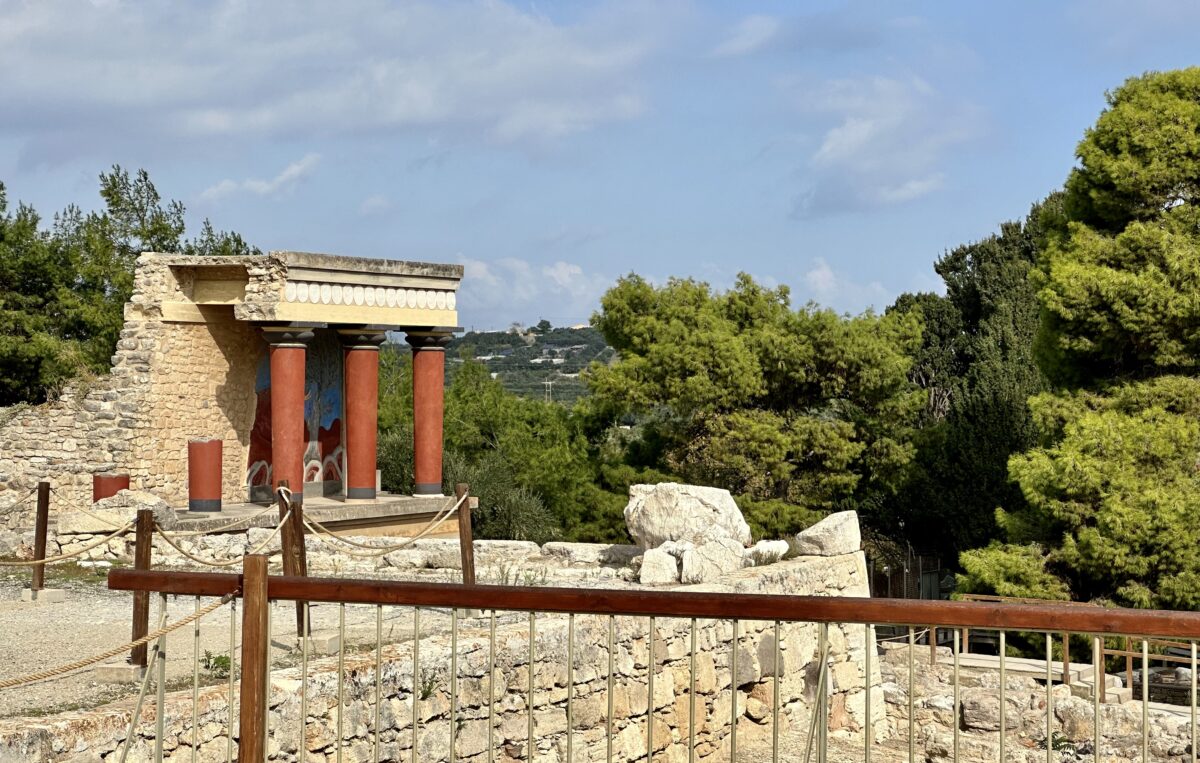

The frescos in the photo(s) were replicas with the originals at the Archeological museum in Heraklion.
Entrance to the labyrinth (photo above right)



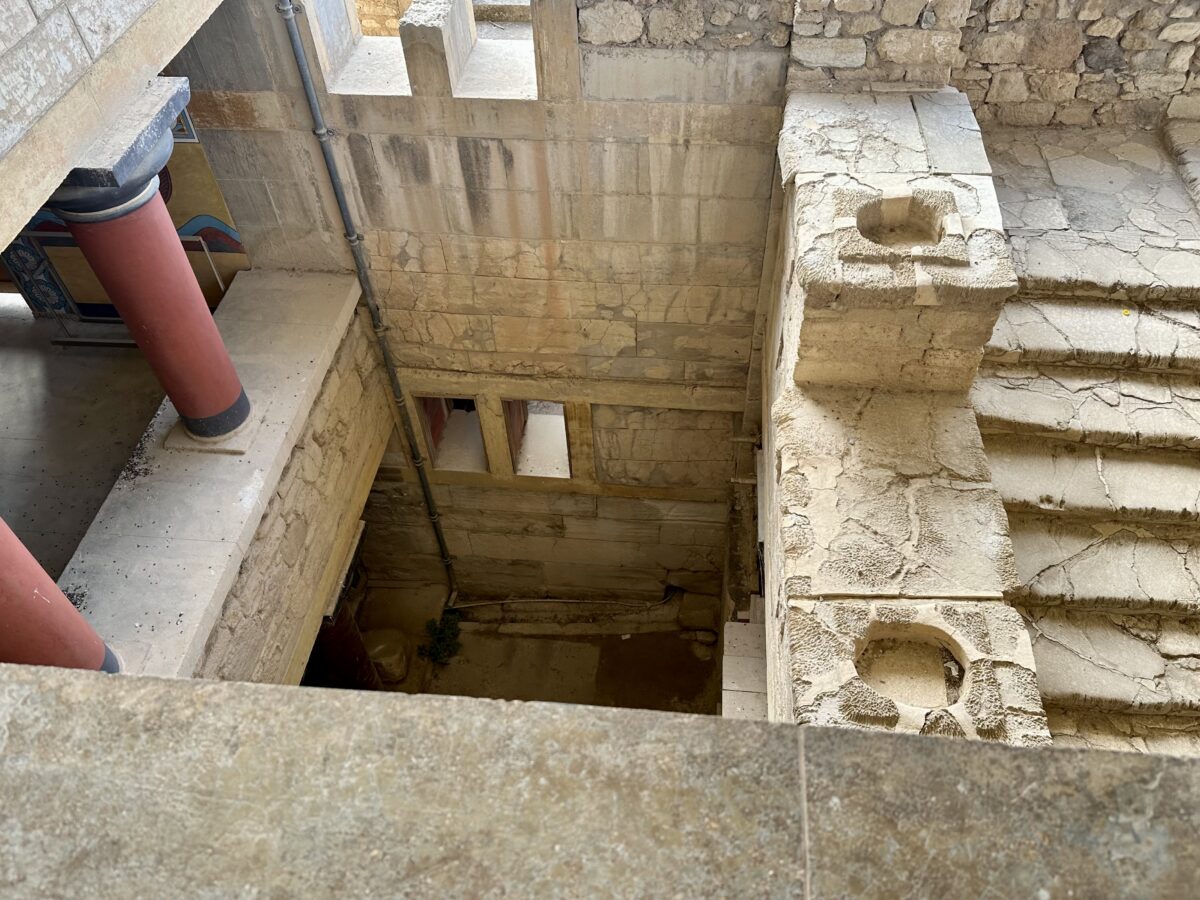
Photo is of the original stones of the 3 top steps going down to the Queens apartments. Incredible that it was 4,000 years old. (photo above left)
Four floors of the queens apartments have been excavated. (photos above)
The columns that tapered at the bottom (the opposite of most Greek columns) were made of cypress trees that were felled and turned upside-down. The round holes to the left of the stairway are where the bases of pillars whose bases were wood had rotted and the columns fell over.
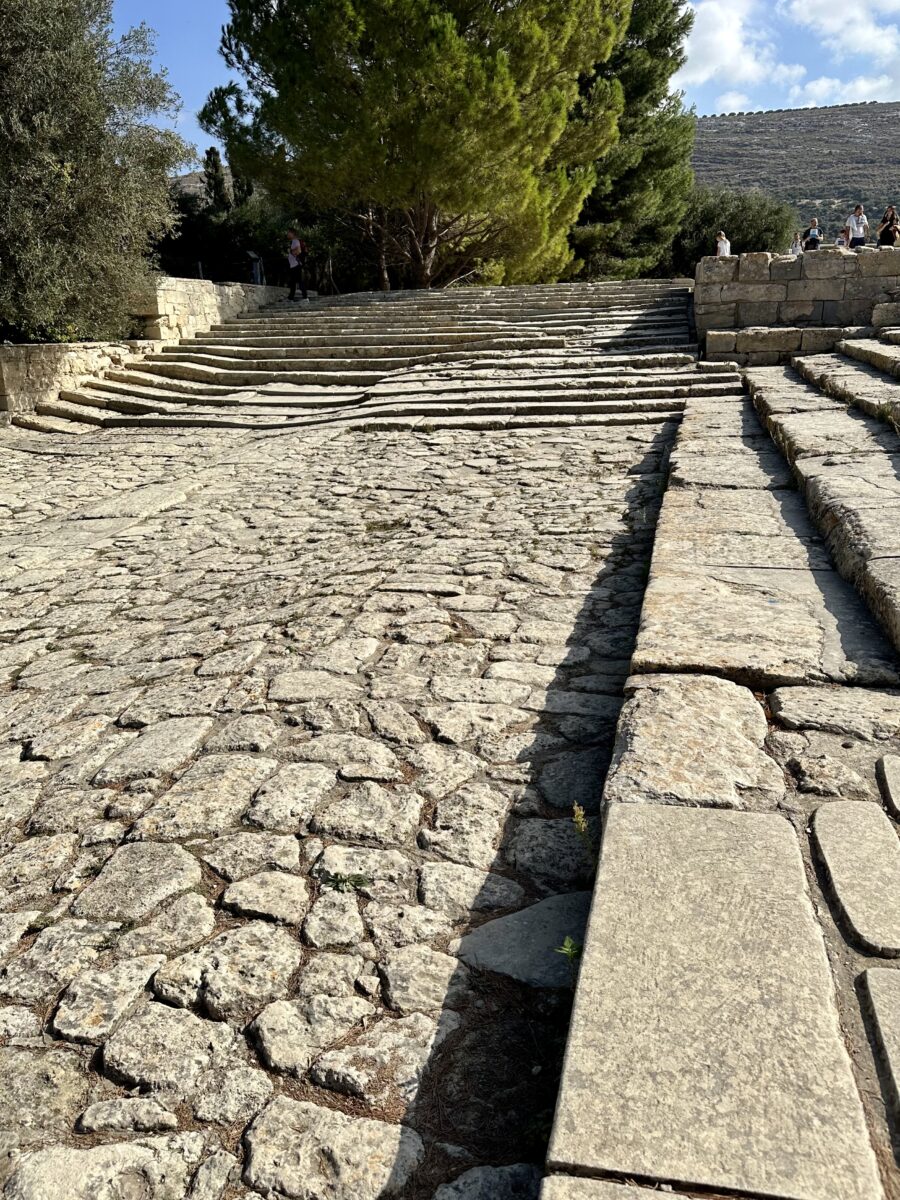

These photos are of the theatre in the Palace of Knossos. Performances were mostly dance and acrobatic ones. The people standing in the upper right portion (photo above left) are in the “royal box” where only the king and queen and people in high positions sat.
The rest of us peons sat on the low narrow steps.
We chose this excursion today because our Great Courses lecturer said that if we were in Crete and we did not visit the Archaeological museum in Heraklion we would miss out on one of the most important museums in Greece with a notable and complete collection of artifacts from the Minoan civilization. All the main artifacts (read: big guns) were on display — the Phaistos Disk, the Snake Goddess, the Bull-Leaping and King of the Lillies frescoes, and all the other excursions that included the Palace of Knossos didn’t include this museum.
Our guide, Katerina, did an amazing job moving through the 10 massive sections containing more than 15,000 artifacts, covering a period of 5,000 years, from the Neolithic era to the Graeco Roman period.


Gold jewelry display cases with pieces from 3,000-1,800 BC! (photos above)

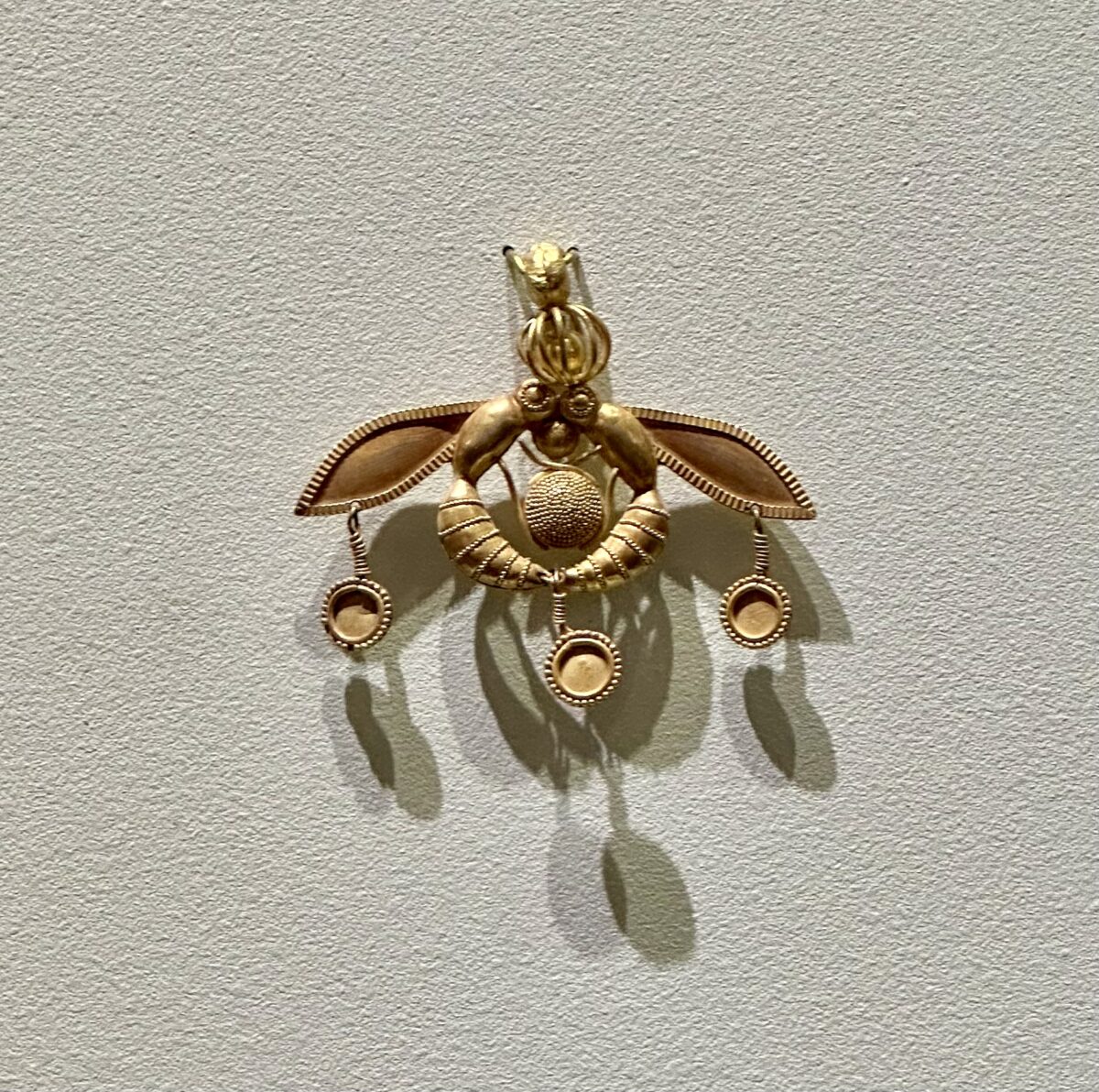
Our guide said that many goldsmiths have tried to replicate this piece without success. This is bee pendant is TINY.
THE BEE PENDANT: This famous gold ornament from Malia is a pectoral pendant consisting of two bees depositing a drop of honey in their honeycomb. They are holding the round, granulated honeycomb between their legs and the drop of honey in their mouths. On their heads is a filigree cage containing a gold bead, while small discs hang from their wings and the sting. This is a true masterpiece of the jeweller’s art, combining repoussé, granulated, filigree and incised decoration. Malia, Chrysolakkos necropolis, 1800-1700 BC.

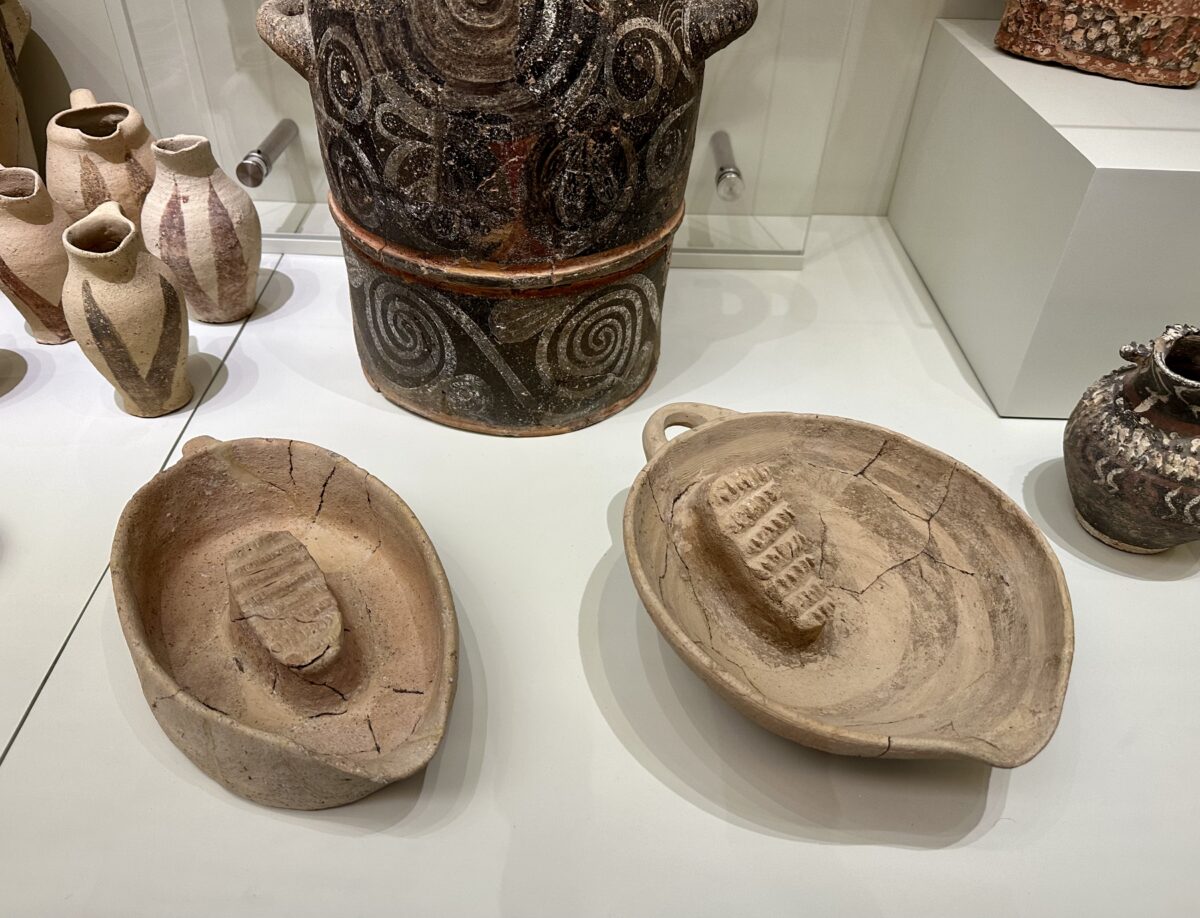

…or this carved jewelry box from 1900-1800 BC! (photo above left)
How about these: right – cheese grater and left – fruit juicer. Again, from 1800-1700 BC. (photo above middle)
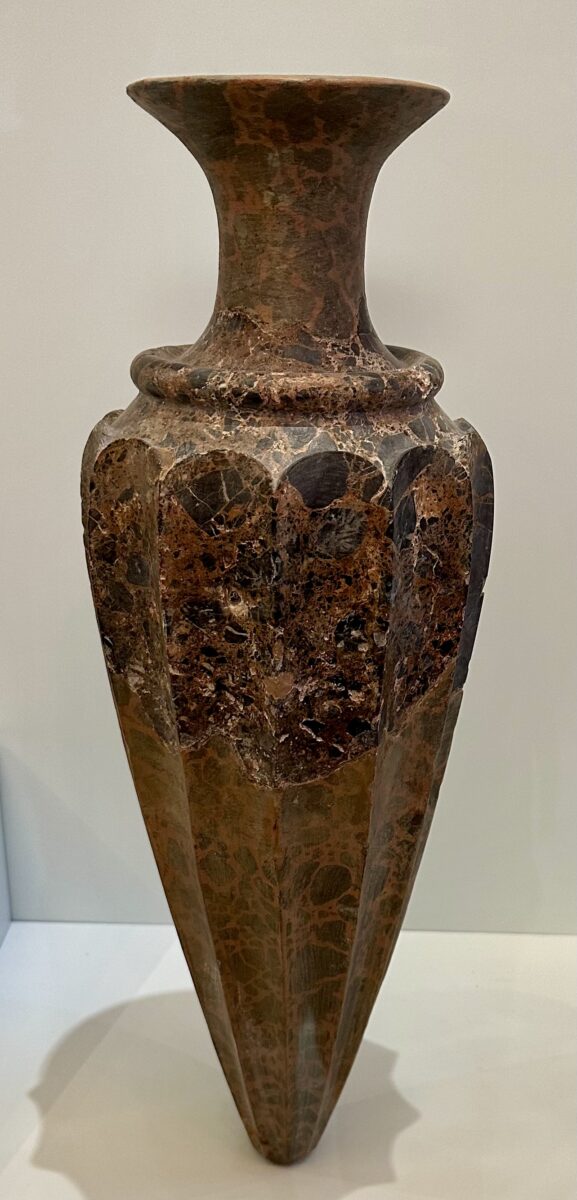

Katerina explained that these pieces (photo above left) were wine contribution vessels from 1,650-1,400 BC. One would carry them upright with their finger at the bottom over the hole. When it was their turn to “contribute” in the procession they would remove their finger and the wine poured out from the bottom.



This photo (above left) is one of the original draughtboard from 1750 BC. It was the precursor to chess. Amazingly our waiter in the Observation lounge was from Africa and remembered his father playing on draughtboards.
Photo (above middle and left) is both sides of the Phaistos Disc. It was about the size of a silver dollar coin.
There was also a wooden model of the Palace of Knossos (below left).
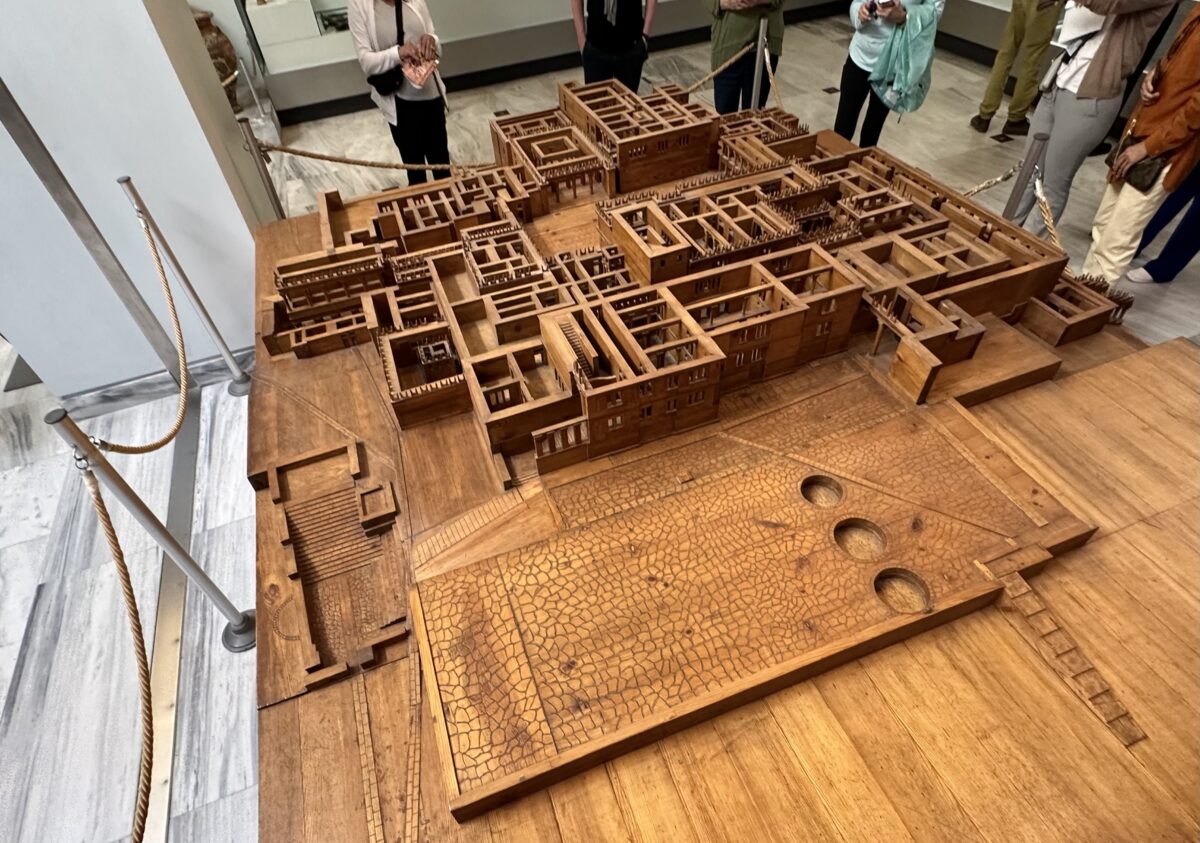


This piece (photo above middle) was just tiny and the rock crystal was as thin as an eggshell. No one in todays time would ever be able to duplicate this.
Described as: Small luxury rhyton of rock crystal, a piece of technical and artistic perfection. The ovoid body is made from a single core of the hard stone. The neck, is produced from another core, is attached to the body by a ring of crystal beads and gilded ivory discs. The raised handle consists of spherical crystal beads threaded onto a bronze wire. Zakros-Central Sanctuary Complex, 1500-1450 BC.

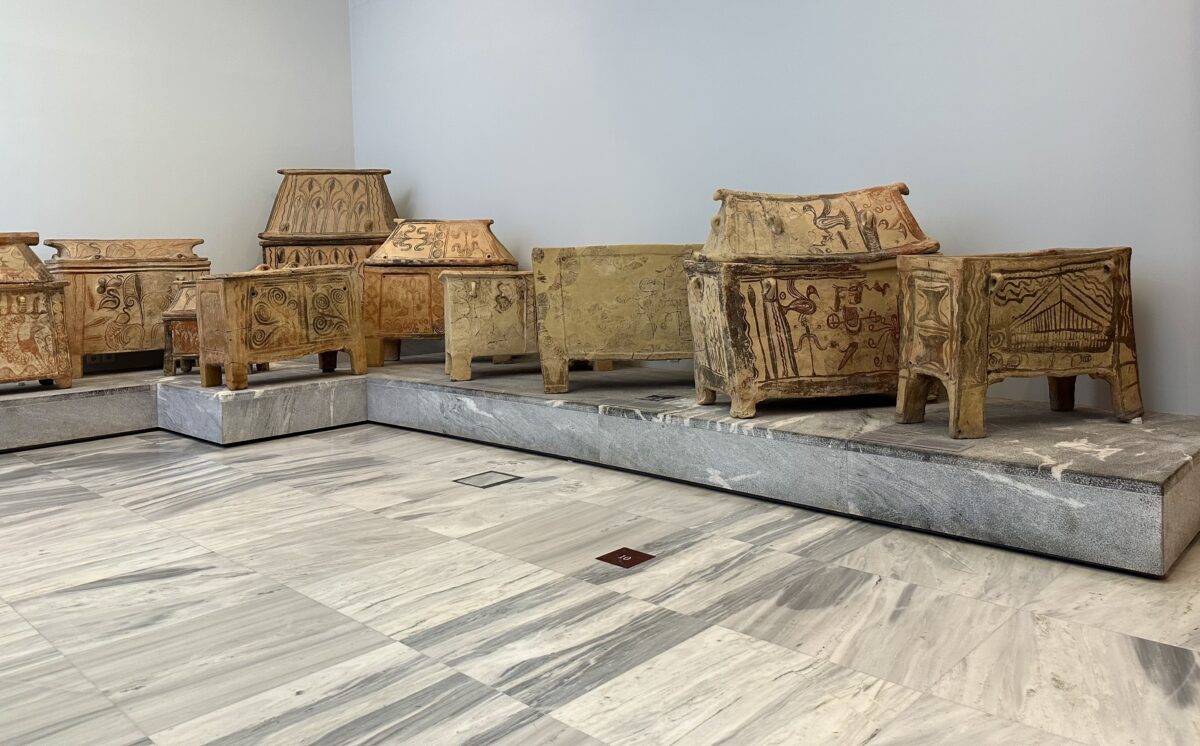

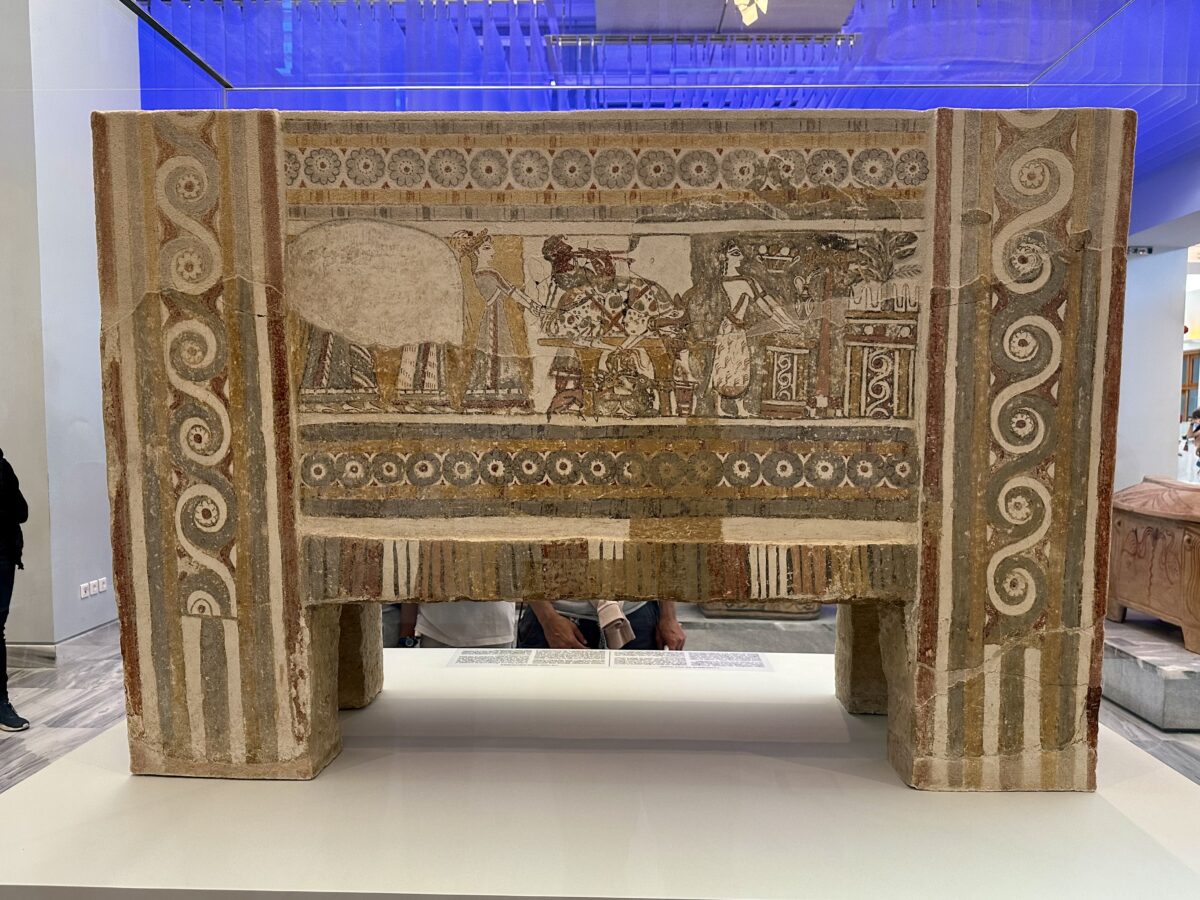
On to a little bit more morbid topic… there was a room filled with sarcophagus’.
Photo (above left) was of an adult.
Much needed respite for the feet in the garden of the museum. One could spend an entire day here if you didn’t have a guide like ours to inform us and keeping us moving. (photo below)


We finished our 8 hour tour in Crete with a delicious typical Greek lunch at a very nice restaurant. (photo above)
Dinner at the Colonnade tonight was delicious for these exhausted travelers.
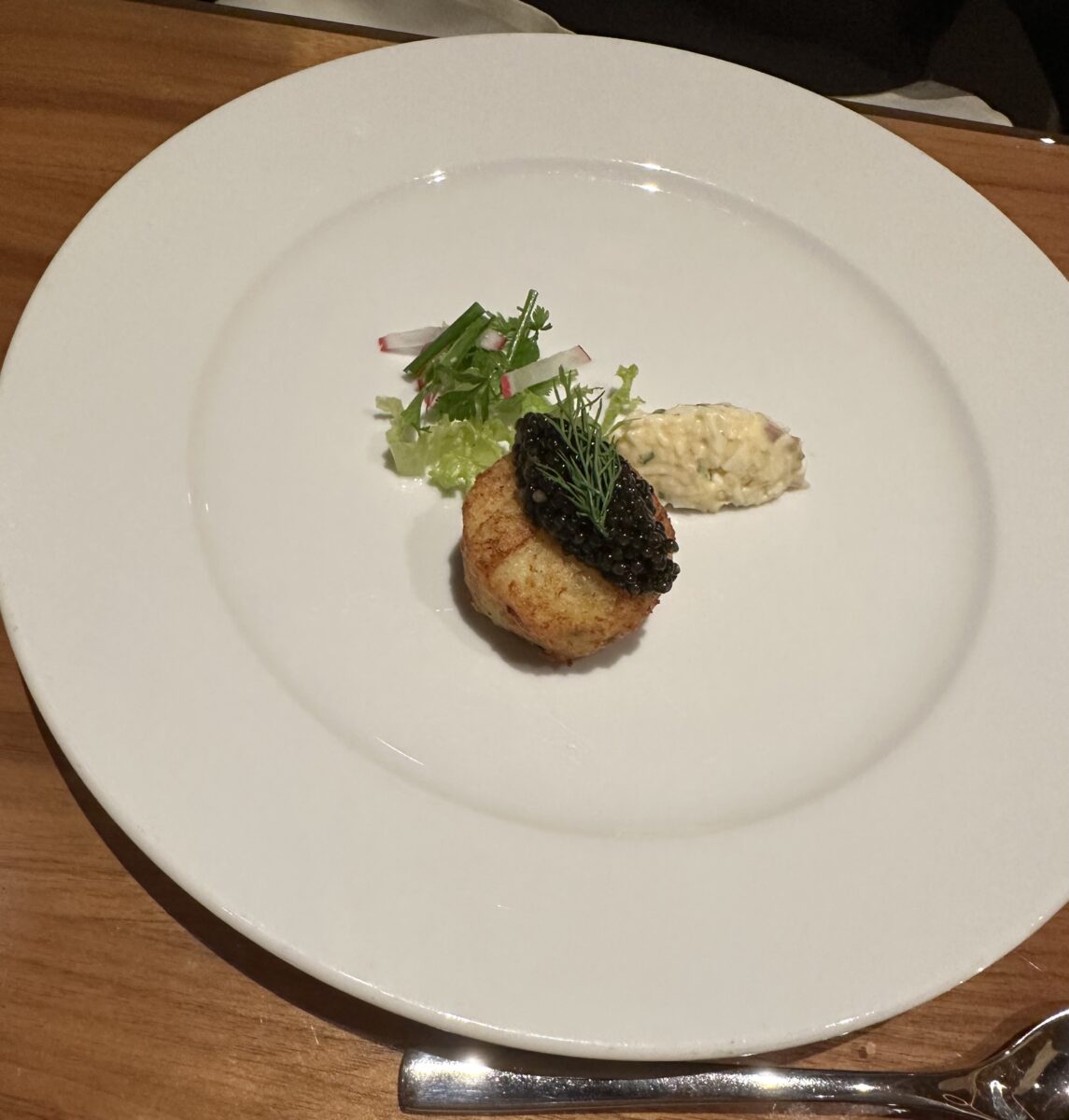
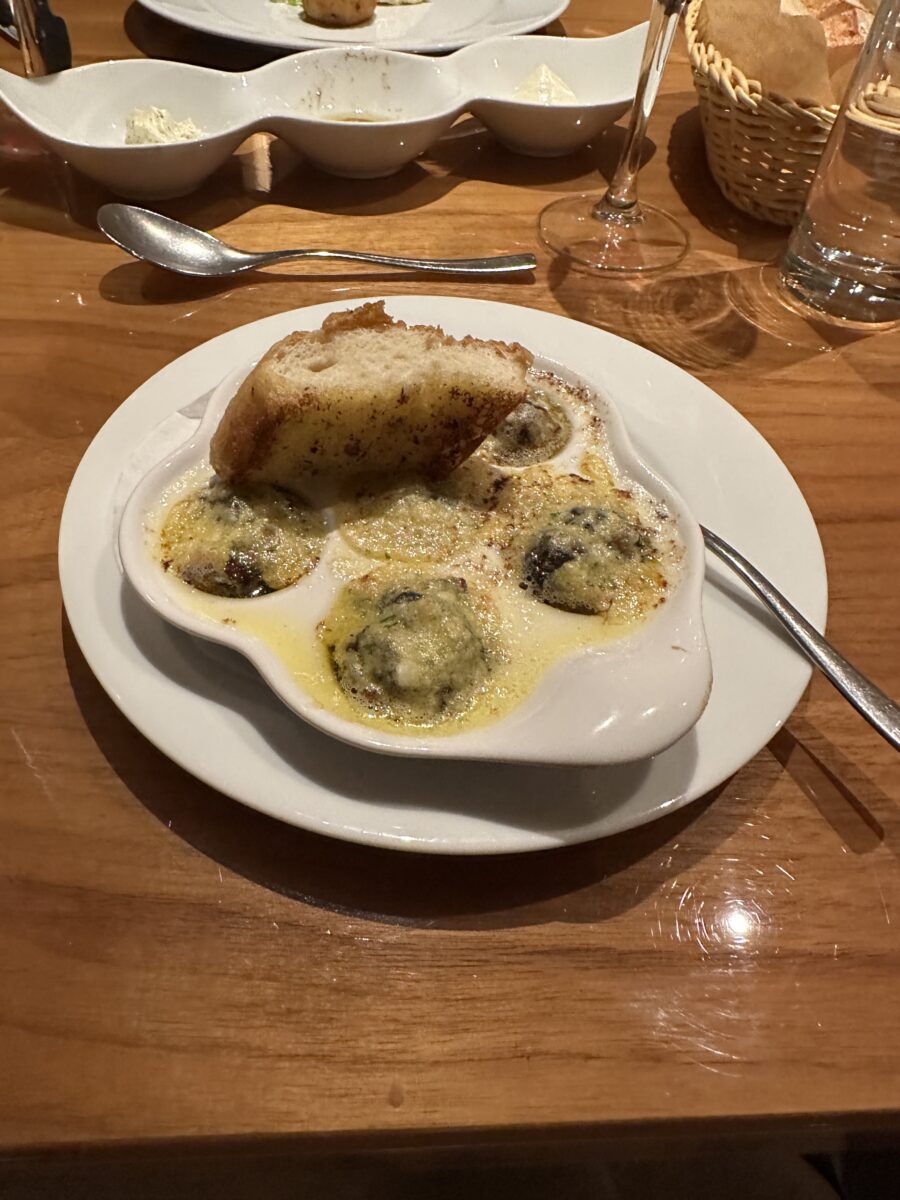


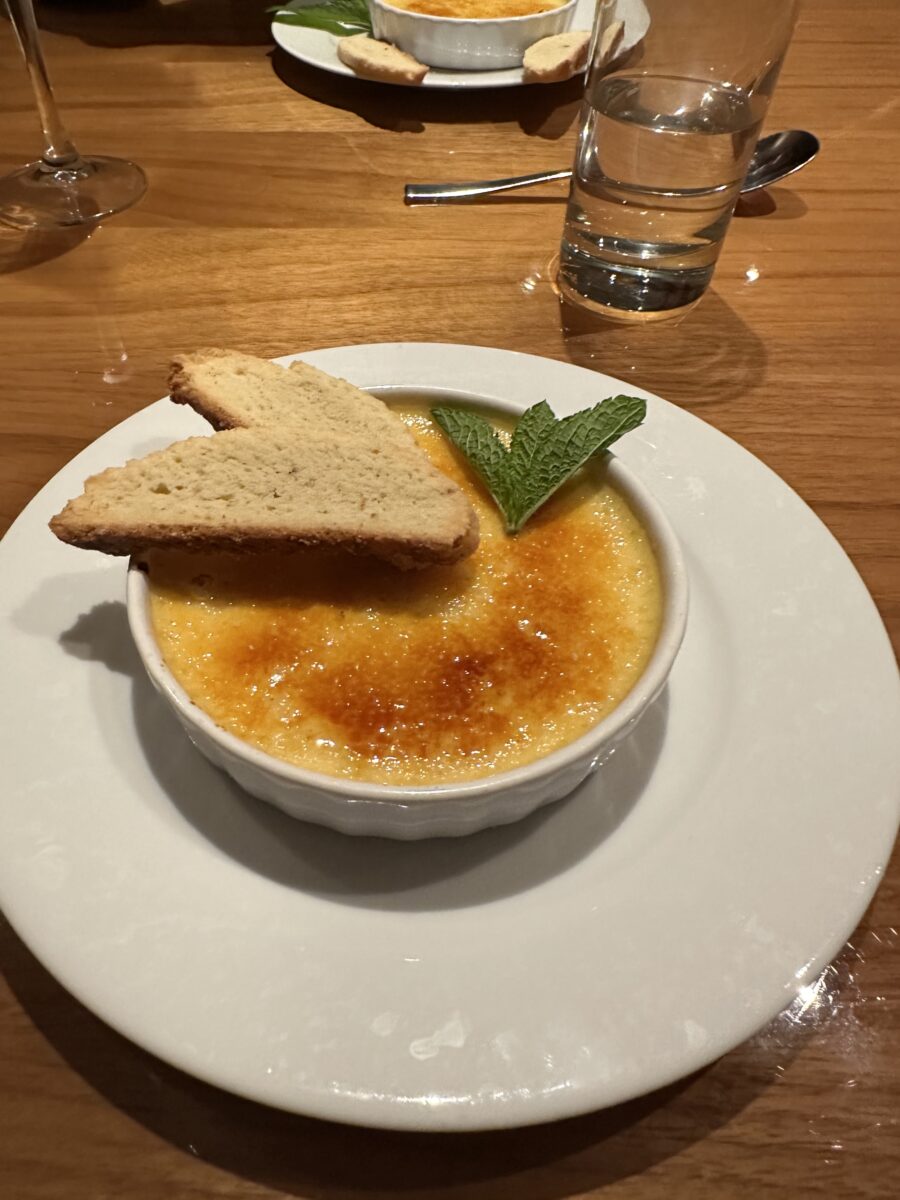
I started with crab cake with caviar
Joe chose the escargots
I chose the beef tenderloin which was cooked to perfection.
Joe chose the lobster tail with seafood risotto. Delicious!
Of course, creme brûlée was what we both chose to finish the consistency delicious meal on the aft deck.





























